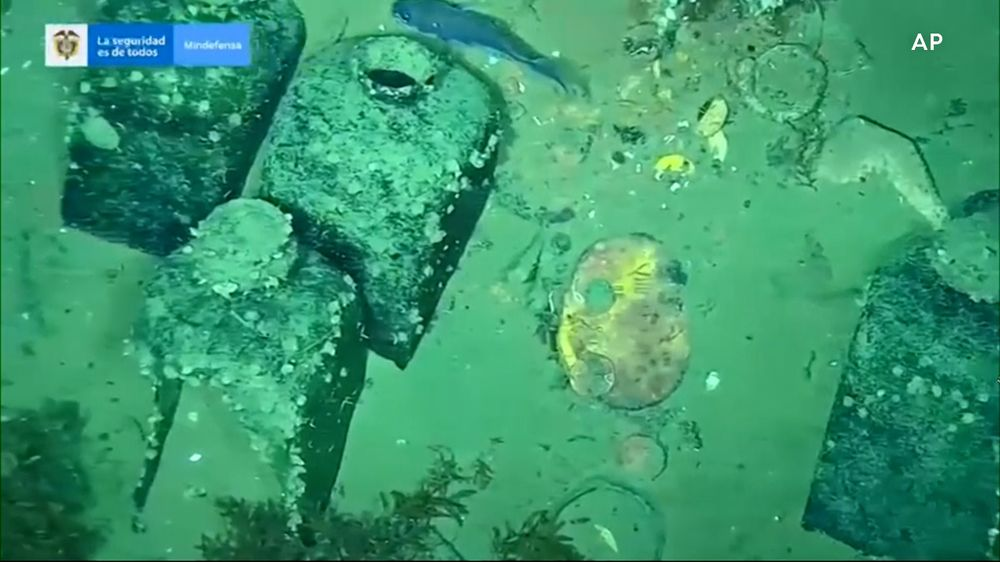Colombia has embarked on the first phase of an underwater expedition to explore the San José, a Spanish warship that sank in the Caribbean over 300 years ago. The ship is believed to house artifacts worth billions of dollars, igniting a fierce legal dispute over ownership rights.
The San José, often referred to as the "holy grail of shipwrecks," was discovered in 2015 off the coast of Cartagena by the Colombian government. This 62-gun, three-masted galleon was the flagship of a Spanish fleet, loaded with gold, silver, emeralds, and other valuables from the mines of Potosi, Peru. It sank on June 8, 1708, during a battle with British ships in the War of the Spanish Succession, with around 600 people on board.
These images of the 300-year-old San Jose galleon ship wreck were released by the Colombian government in 2022. (AP)
In 2022, the Colombian government released images of the 300-year-old wreck. The initial stage of the expedition will use "non-intrusive" remote sensors to photograph the ship, according to the Colombian Institute of Anthropology and History (ICANH). These images will help create an inventory of the archaeological finds on the seabed. ICANH has designated the site a national "protected archaeological area" to preserve its scientific and archaeological value.
Researchers plan to employ an underwater vessel with acoustic positioning technologies and a remote operation vehicle equipped with various sensors and tools to explore the site. Culture Minister Juan David Correa emphasized the unprecedented nature of the expedition, highlighting its potential to deepen understanding of history and culture.
Billion-Dollar Legal Dispute
The San José's discovery is significant for Colombia, not only for its treasure but also for the cultural and historical insights it offers into Europe's 18th-century economic, social, and political climate. However, the discovery has led to a multi-billion dollar legal battle.
Colombia claims it discovered the San José in 2015 with the help of international scientists. This claim is contested by the US-based marine salvaging company Sea Search-Armada (SSA), formerly known as Glocca Morra, which asserts it found the shipwreck in the early 1980s. SSA has taken legal action against the Colombian government in the Permanent Court of Arbitration, seeking approximately $10 billion – half the estimated value of the treasure.








